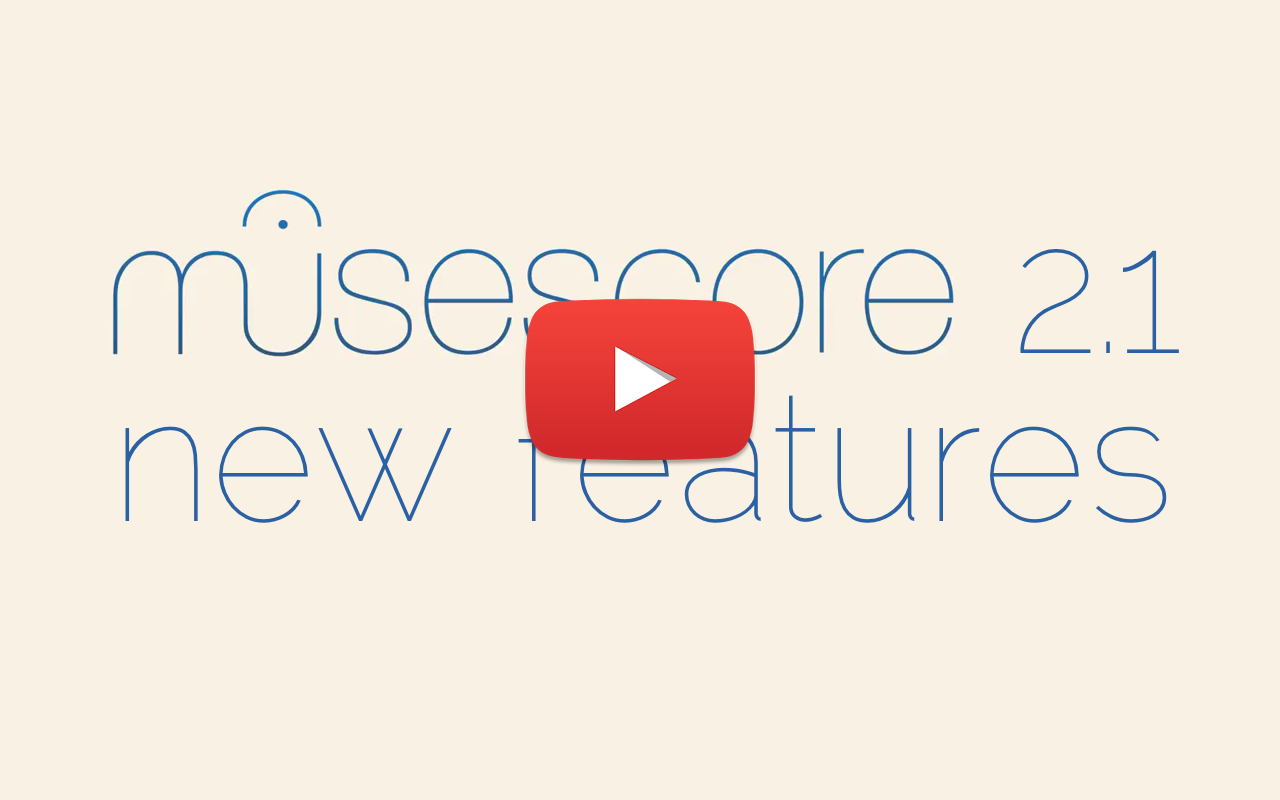MuseScore 2.1 is released
While the development of MuseScore 3 is ongoing and we are rebuilding a lot of features from the ground up, we wanted to bring you some of that work sooner—so here comes MuseScore 2.1! Built on top of the 2.0 series, with cherry-picked developments from the in-progress MuseScore 3, MuseScore 2.1 offers a bunch of new features and 300+ bug fixes and user interface improvements, making it both our most powerful and our most stable version yet.
Download MuseScore 2.1
Check out FTP to get old versions of MuseScore.
New features
A picture is worth a thousand words… so how about a video. Watch and listen to Isaac Weiss walking you through some of the new features in MuseScore 2.1.
For those who prefer reading, here are some of the highlights:
- New note input modes allow you to play music on a MIDI keyboard in real time and have MuseScore transcribe both pitches and rhythms, either using the built-in metronome or your foot pedal to keep the tempo
- New input mode to allow entry of rhythm first, pitches later
- New command to rewrite rhythms to show beat divisions according to time signature rules
- New and improved commands to change duration of existing notes while in note input mode, including adding and removing augmentation dots
- Synthesizer improvements, including updates to the default SoundFont and better support for SFZ format
- Ability to upload audio to MuseScore.com along with your score, so others can hear your score with your chosen SoundFont or SFZ
- Improved historical tablature support, including lute bass strings
- When changing instruments mid-score (e.g., from flute to clarinet), the transposition is now handled correctly
- Improved selection controls, including the ability to select notes of the same pitch, duration, or notehead, and the ability to select or deselect all element types in the Selection Filter
- New command to swap selection with clipboard (simultaneously paste to and copy from the selected range)
- More controls: ability to reorder score tabs, customize pause length of breaths and caesuras, add/remove brackets on accidentals, set MP3 bitrate, add page breaks when creating albums, include fingering in tablature staves
- New and improved templates and instruments, including various marching bands and percussion ensembles, a general percussion staff, more standard clefs for basses, additional ethnic instruments
- UI improvements in Staff Properties, New Score Wizard, Edit Drumset, and other windows
There are many more improvements than that, including some under the hood; check out the release notes for an exhaustive list of new features and fixed bugs.
Note that though MuseScore 2.1 is almost fully compatible with the 2.0 series in both directions, there are a few corner cases where scores may be rendered slightly differently in the different versions of MuseScore, documented here.
Credits
On top of the long-time contributors who participated in creating MuseScore 2.1, we are very proud to welcome 20 new contributors since the release of version 2.0.3 last year. It brings the total number of MuseScore contributors to exactly 100.
Thanks to all the code contributors, translators and documentation writers!
What’s next?
While the development of MuseScore 3 continues behind the scenes, following up on the redesign of MuseScore.com earlier this year, a new design for MuseScore.org is also on its way. It will make it easier to follow and contribute to conversations from mobile and touch devices, and also improve access to support and help resources to make the learning curve easier for new users. We will also officially launch the OpenScore initiative soon, in collaboration with IMSLP.
